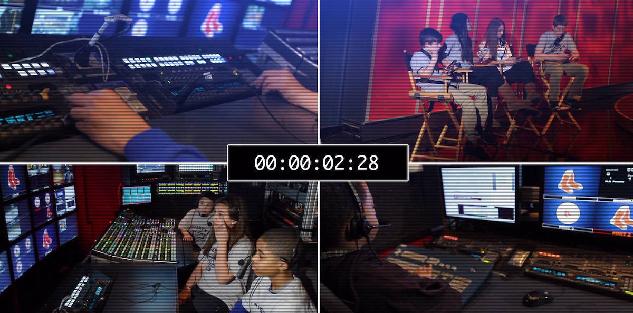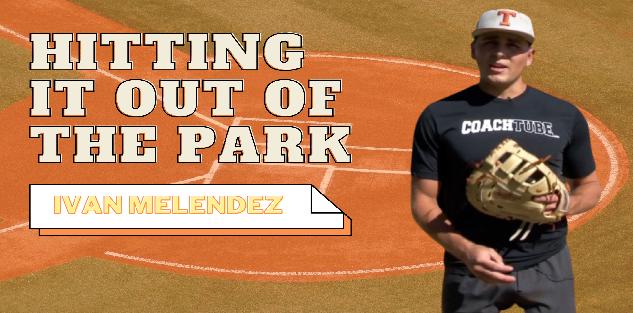Featured courses
- Understanding The Shift by Brandon Ogle
- Two Drills to Improve Outfield Movement and Communication by Grant Young
- The Ultimate Resource For Coaching Youth Baseball by Jackson Chlebowy
- Become a Master at Bunting by Brandon Ogle
- 5 Reasons Why There Is More To Good Base Running Than Just Speed by Brandon Ogle
- Three Injury-Prevention Tips For Your Offseason Pitching Program by Grant Young
- How to Teach Hitting to the Next Generation by Grant Young
- Developing Defensive-Minded Baseball Catchers by Grant Young
- 3 Baserunning Tips to Score More Runs in Baseball by Grant Young
- 5 Outfield Drills to Work on in Season by Alec Burris
- Keys For Scoring More With Runners on First and Third Base by Grant Young
- How to Develop Your Game to Become a Five-Tool Player by Brandon Ogle
- 3 Coaches Share the Keys to Running Baseball Practice the Right Way by Grant Young
- Four Drills to Sharpen a Baseball Hitter’s Vision at the Plate by Grant Young
- Four Quotes to Hit Better With Two-Strikes by Grant Young
- Four of Former MLB Pitcher Juan Nieves’ Movement-Based Pitching Drills by Grant Young
- Two Tips For Developing an Elite Baseball Bullpen by Grant Young
- Overcoming the Four Challenges of Indoor Baseball Practices Because of Weather by Grant Young
- Three Tips to Make Your Baseball Team Mentally Tougher by Grant Young
- Three Priceless Philosophies to Motivate Your Baseball Team by Grant Young
- Three Offseason Baseball Drills to Simulate Competition by Grant Young
- Three Baseball Offseason Strength and Conditioning Essentials by Grant Young
- Important Ways to Improve Your Baseball Team’s Baserunning by Grant Young
- Three Ways to Perfect Hitting Mechanics From an MLB Icon by Grant Young
- Catchers can influence pitchers...for bad or good by Drew Johnson
- Throwing Strikes and Playing Good Defense Equals Wins by Jose Ortiz
- Legendary Indiana Head Baseball Coach Bob Morgan’s Offensive Theory by Grant Young
- Tennessee Head Baseball Coach Tony Vitello on How to Practice Baserunning by Grant Young
- Three Great T-Ball Drills For Youth Baseball Players by Grant Young
- How to Manage a Baseball Pitching Staff by Grant Young
- Three Uncommon Tips to Become a Better Hitter by Grant Young
- How a Baseball Coach Can Develop Strike Throwers by Grant Young
- Drills to Develop Elite Baseball Outfielders by Grant Young
- Baseball Training Exercises to Strengthen Arm and Bat Speed by Grant Young
- How to Use Bunting to Score More Runs by Grant Young
- How To Build An Elite Baseball Infielder by Grant Young
- Three Drills to Improve Your Baseball Team's Infield Play by Grant Young
- Three Keys to Curating a Pitching Staff’s Success by Grant Young
- 3 Techniques to Develop a Baseball Player’s Hitting Approach by Grant Young
- How to Cultivate Confidence Within Your Pitchers by Grant Young
- 5 Every Day Drills To Help You Become A Better Catcher by tyler Linderman
- How to Throw A Curveball by Brandon Ogle
- How to Assemble a Lock-Down Bullpen by Brandon Ogle
- How to Throw a Sinker by Brandon Ogle
- How to be a Smart Baserunner by Brandon Ogle
- Improving a player's slugging average by Phillip Woolgar
- The 8 Fundamentals of Pitching by Drew Johnson
- How to Throw a Deceiving Changeup by Brandon Ogle
- Step Up Your Outfield Defense With These Three Drills by Jose Ortiz
- 8 Baseball Drills Every Player Should Practice by Drew Johnson
- How To Become An Elite Defensive Outfielder by Tyler Linderman
- 5 Tips For Crushing A Curveball by Johnny Grassi
- LEGENDS FOR YOUTH INCLUSION BASEBALL CLINIC by Phil
- Fourteen Ways To Turn A .300 Hitter Into A .210 Hitter by Jay P. Granat, Ph.D.
- How To Become The Ideal Leadoff Man by Brandon Ogle

How to Throw A Curveball
- By Brandon Ogle
A curveball has the potential to be a huge weapon for pitchers. If thrown effectively, it can keep hitters on their toes and guessing. Many of the great pitchers in Major League Baseball have perfected their curveballs to know exactly when and where to throw them. However, all of this is easier said than done. Learning to throw one takes plenty of practice, but it is vital to have the fundamentals down to make this practice time worthwhile.
Grip
With a curveball, the grip is vital. This image to the right should be used as a baseline. First, notice the middle finger. It must feel some resistance from the seam in order for the curveball to get the tight rotation that makes it so deadly. Next, your thumb should be placed on the seam on the other side of the ball. The last key point is that the pinky finger shouldn’t be touching the ball. Holding the ball like this may take some time to get used to. I recommend you feel comfortable and knowledgeable of the grip before getting ready to throw.
Quick Tips: Proper Grip For Throwing A Curveball
Keep in mind there are other forms of curveballs, but this is the most basic. After you effectively have this one down, then you can begin experimenting with other grips.
Decrease the Stride Length
After you feel comfortable with your grip and wrist being relaxed, it is time to alter some of your pitching mechanics. Many recommend that you shorten your stride length by a couple of inches. This will make it easier to come out high with the curveball. Once you come to the point where your foot strikes the ground, your elbow should at least be at the level of your shoulder. All of this becomes much easier when the stride length is shorter than what it is with a fastball.
Release
The release of a curveball is something that takes some time to learn as well. As you release the curveball, your hooked wrists allow your hand to pull down in the front. With this said, it is very important to release the ball closer to your body to avoid throwing a hanging curveball. A hanging curveball means improper mechanics were utilized and is usually a pitcher’s worst nightmare. The Ultimate Pitcher provides some great tips on the release portion of the curveball. “Snap your wrist and arm downward, letting the ball tumble out of your hand off of your middle finger if you’re using a beginners or knuckle curve. Your elbow should be at your belt buckle at the follow through position, and your back should be flat over your landing leg.”
Here Coach Bob Morgan, former Indiana Head Coach, explains the spin of the baseball.
Source: Pitching Fundamentals: Drills, Techniques, and Tips.
Arm Speed
The final concept that I’ll discuss is arm speed. If you have a completely different arm speed between fastball and curveball, then hitters will recognize and adjust appropriately. They’ll know when a fastball is coming and will be prepared to jump all over it. The quicker arm speed you utilize with the curveball, the tighter downward movement you’ll see. It will also look more like the arm speed used with a fastball. If you’re able to do this effectively, it won’t only keep hitters guessing with the difference between curveballs and fastballs, but also create a much more dynamic curveball.
Legends of the Curveball
In today’s game, there are plenty of pitchers in the MLB that have mastered the curveball and are throwing it better than ever. Here are a couple of them:
Clayton Kershaw – The Los Angeles Dodgers’ ace doesn’t have 3 Cy Young awards for just having a fastball. In addition to his heater, Kershaw possesses a knee-buckling curve that is a main part of why he went 21-3 last year with a 1.77 ERA. Let me throw it back to 2008 when Kershaw was making his first spring training appearance in his rookie season. Announcer Vin Scully said, “Ohh, what a curveball! Holy mackerel! He just broke off Public Enemy No. 1. Look at this thing! It’s up there, it’s right there and Casey is history.” This was after Kershaw struck out Sean Casey with one of those dominant curveballs. Safe to say he’s been working on this one for years!
Roy Halladay – The former Cy Young winner is no longer in Major League Baseball, but that doesn’t mean we can’t show some respect for his brilliance in throwing a curveball. After all, his nickname is Doc. While many pitchers use a curveball sparingly, Halladay wasn’t afraid to use his curveball as his out pitch. Even when hitters were expecting it, they still struggled to put much wood on it.
Where to Find Help
In today’s media age, there is plenty of information out there available. You can learn everything from juggling to basketball moves on the web. Likewise, some up-and-coming players who are digital natives are proving this information can be useful. Grant Holmes, who was a first round pick of the Los Angeles Dodgers in the 2014 MLB draft, said he learned how to throw his curveball from a YouTube video. The interview with Holmes in its entirety is featured on Carolina Live. Holmes says, “I learned it off of YouTube when I was probably in about eighth or ninth grade. It’s crazy.” Obviously, you can’t teach the 100 mile per hour heat on Holmes’ fastball, but the technical attributes can easily be taught through various mediums.
Another great source for online instructional videos specifically designed for sports is CoachTube. They have dozens of courses to improve your game, even some that focus on the proper techniques to ensure pitchers are able to handle curveballs and change ups without picking up an injury.
Learn It, Practice It, Master It
Throwing a curveball at the 11-5 or 12-6 level like some pitchers do today is something that takes a lot of hard work. Not even all of the major leaguers have truly mastered a dominant curveball. That is why I suggest you digest as much material you can find online and apply it to your pitching. Along with the tips I gave in this article, go out and continuously practice it before implementing it into your arsenal.



